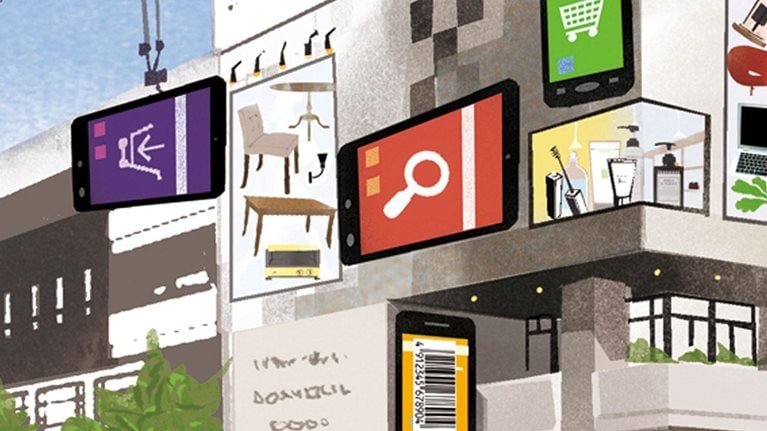For years now, hand-wringing executives in the retail sector, nervously eyeing Amazon, have been able to point to their own retail stores as potential strategic weapons. For all the well-documented challenges and economic pressures of managing brick-and-mortar locations, shopping trends and consumer spend still favored the store. After all, some 80 percent of purchases are expected to still happen in stores in 2020.1
Stay current on your favorite topics
With Amazon’s well-publicized purchase of Whole Foods, the refuge of an omnichannel strategy anchored on physical stores has evaporated. Let’s be clear, though. The real news isn’t that Amazon is buying a physical chain of stores. Taken with the retailer’s other recent developments, such as Prime Wardrobe, which allows people to try and return clothing for free, the real story is Amazon’s systematic approach to whittling away at what makes a store a store.
While omnichannel is evaporating as a strategic advantage for stores, a careful review of what stores offer consumers shows that there are plenty of areas where stores can still compete and win.
The steady deterioration of the value proposition offered by ‘stores’
There are specific reasons why customers go to a store—seven of them, to be precise (see exhibit). While Amazon consistently grabs headlines with its bold moves, a range of smaller start-ups are redefining the retail experience by innovating delivery, sharing, and curation. That means successful retail in the digital age isn’t just about “how to respond to Amazon” but more about how to stay on top and ahead of the wave of innovations hitting retailers.

The announcement of Kohl’s and Amazon’s partnership in September is an example of how stores are responding. Kohl’s is looking for a way to use the tailwinds of e-commerce and Amazon to continue to drive traffic to brick and mortar.
Shining a light on each of the elements of the in-store value proposition is necessary to understand what the battlegrounds really are. By being methodical in evaluating the remaining battlegrounds and being clear what the value of each is to consumers, retailers can develop a thoughtful strategy that embraces parity in some areas while shifting activities to others where they can still win.
Would you like to learn more about our Marketing & Sales Practice?
What’s a retailer to do?
To have a chance to thrive in an increasingly pressurized environment, retailers need to build up specific capabilities. They include upgrading their technology infrastructure to support more innovation and embracing an agile, test-and-learn culture. In many cases, they’ll need to partner with vendors and businesses to build new capabilities and access new markets.
But when it comes to the value proposition of the store itself, there are three actions retailers can take:
1. Focus on making stores work. With the vast majority of shopping still happening in stores for the foreseeable future, businesses need to focus on continually optimizing their stores’ efficiency. This should include analyzing in-store customer experience to identify what associate actions drive engagement and conversion, and focusing on data collection from store visits (e.g., email collection and link to digital relationship for in-store visitors). Apple and Sephora, for example, serve relevant communications and offers based on where a customer is in a store and when they enter. Best Buy has invested in more training for sales staff, employee-discount programs to retain talent, and improvements to its internal search engine so that salespeople can help customers get the information they need more quickly. Working in conjunction with retailers to use analytics to optimize trade and promotions is a particularly valuable area to focus on, since only one third of T&P spend generates a positive ROI. Executives need to also re-examine their collective store footprint, particularly focusing on which markets are actually delivering growth. That means having a much more granular understanding of markets, such as focusing on cities rather than regions. For apparel, for example, 15 of the top 20 cities with the highest growth are in emerging markets.2 This granular approach to stores should be taken for both rationalization/closures and new openings.
2. Differentiate your offering. When it comes to choice, Amazon has an advantage that seems virtually unassailable (372 million products3 ). Companies have had success by differentiating their products so a shopper can’t compare them to, and then buy them from, Amazon. Costco, for example, has had success in competing on value and breadth of product choices with its big-box format. Other department stores have invested in stocking unique brands or products that just aren’t available elsewhere. The most effective differentiation strategies, however, are grounded in a deep understanding of customer needs, the lifetime value of customers at a granular and behavioral level, and the retailers’ own strategy. Nike, for example, has a clear focus on its most important customer segments from product development to their digital-asset development, e.g. apps geared towards runners or sneaker heads.

Setting an agenda for organic growth in the digital age
3. Double down on the open battlegrounds of the value proposition. For all the progress Amazon has made, there are still a number of areas where it doesn’t have a chokehold. A number of companies have already made significant inroads in preserving and capitalizing on these elements.
- Product vetting/touch & feel. While Amazon’s purchase of Whole Foods and its recently launched Prime Wardrobe have created significant pressure on this element of the store’s value proposition, this space is still unclaimed. Product showrooms let shoppers try and experience the product, while pop-up stores in shopping malls can offer distinctive products for a short period of time. In the United Kingdom, for example, pop-ups accounted for £2.3 billion in sales in 2015, up 12 percent over the previous year.4 Sephora hosts in-store events where customers can try and learn how to work with new product and beauty trends; the current Monochromatic Makeup trend, for example, was bolstered by events where customers could try products, across stores in New York City, San Francisco, Los Angeles, Boston, and Chicago.
- Consultation, advice, authority. While ratings and reviews have provided consumers with some guidance in product selection, they still fall far short of speaking in person with an expert. For DIY, Lowe's and Home Depot have trained associates to be reliable experts. They also offer numerous how-to classes that provide shoppers with valuable information. Nordstrom, a company with a heritage of customer service, is also continuing to deepen the role of the personal shopper and stylist advice across categories such as beauty and wedding as well as through store-to-digital offerings like TextStyle. In the beauty category, Sephora has become an accepted source of objective and trusted advice across a broad assortment of best-selling and newly released beauty brands.
- Experience and community. Strengthening relationships with customers has, of course, always been an important element of retail. But retailers have become more creative in how they do that through the store. The notion of “retail as theater,” i.e., a source of entertainment and experience, has found new relevance through Apple and Tesla, which have created cachet around the store experience. Nordstrom Local, a recent initiative from the upscale retailer, has launched new experiences, including an in-store bar with wine, beer, coffee, and juices; eight fitting rooms; alterations; convenient merchandise pickups and returns; manicures; and expert image consultations with its knowledgeable personal stylists. The Local aspires to become a physical manifestation of the Nordstrom brand. Lululemon has taken another approach by offering a breadth of events such as yoga classes and run meet-ups. They engage local yogi, fitness instructors, personal trainers, and professional athletes as "brand ambassadors" and encourage them to both offer free classes and participate in programs such as “Purpose and Practice” to create deeper community connections.
There is no doubt that Amazon and other retail innovators continue to make it difficult for the traditional retailer. To compete and thrive, however, is possible, if companies clearly articulate a committed strategy based on the in-store value proposition.


